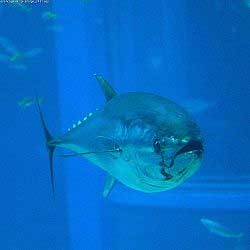6) Spicy Mayo is “An American Thang”
In Japan, you won’t typically find spicy mayonnaise on sushi rolls; that’s definitely an American thang. We love our mayonnaise, almost as much as the French love the creamy stuff. Those zigzags of spicy sauce on your sushi rolls are usually piquant mayo or simply the ubiquitous Sriracha chili-garlic sauce. You know, that Vietnamese hot sauce that has nearly replaced ketchup as America’s favorite condiment. Some sushi insiders say that the not-so fresh tuna often ends up in various rolls, and spicy mayo helps to mask the stench.
7) Miso Soup Doesn’t Traditionally Come Before Your Meal
Most sushi places preface your meal with a cup of steaming miso soup, pocked with tofu cubes, scallion and wakame seaweed. This is another American adaptation because in the Land of the Rising Sun, miso broth, which usually is served for breakfast, comes with steamed rice as part of the main meal. Americans prefer their soup first so that’s probably why it’s done in this manner. And, yes, it’s okay to pick up the bowl and drink it like tea–no spoon required.
8) There’s Lots to Know About Roe
You’re probably wondering what’s up with those tiny eggs on your sushi rolls? The two most common kinds of roe served at sushi places are tobiko (from South Pacific flying fish) and masago (from North Atlantic smelt). These little fluorescent eggs look and taste relatively similar but sushi snobs can usually spot the inferior masago before the plate even hits the table. Roe aficionados say that fatty salmon eggs (ikura), which sometimes get used, don’t properly pop on the tongue like tobiko and masago.
9) Overfishing is a Major Concern
You hear a lot these days about overfishing. Ocean protection groups worldwide believe that some tuna species are in danger of extinction because of greediness, fueled by the demand from sushi and sashimi places. Bluefin tuna is wildly popular at upscale establishments, and it fetches an extremely high price. Researchers also maintain that Yellowfin tuna, also known as ahi, are being seriously overfished in the Pacific Ocean, yet not quite to the same extent as Atlantic bluefin. While it might be hip to say, “I was one of the last people to eat bluefin,” the number of albacore tuna is much higher, so maybe that’s a better eco-conscious option. However, most sushi snobs are reluctant to eat this inferior stuff.
 |
| A Bluefin Tuna looking surprisingly apathetic |
10) Sushi and Sashimi Aren’t the Same Thing
It’s important to remember that sushi and sashimi are two different things. I’m sure you have an all-things-Nipponese friend that reminds you of this fact from time to time. There’s no rice allowed in the world of sashimi, just thinly sliced pieces of the highest quality fish. And, speaking of sushi snobs, don’t always be fooled by your waiter’s fancy knowledge of sushi and sashimi. Chances are a year ago he thought that toro (fatty tuna belly) was a lawn mower, most likely because he was a landscaper in the burbs–a real just-add-sake sushi expert.
We always want to be transparent and honest about our article content. From time to time, we may link to products and services that compensate us for the referral. This does not affect your cost, but it does help us fund future content for this site.
